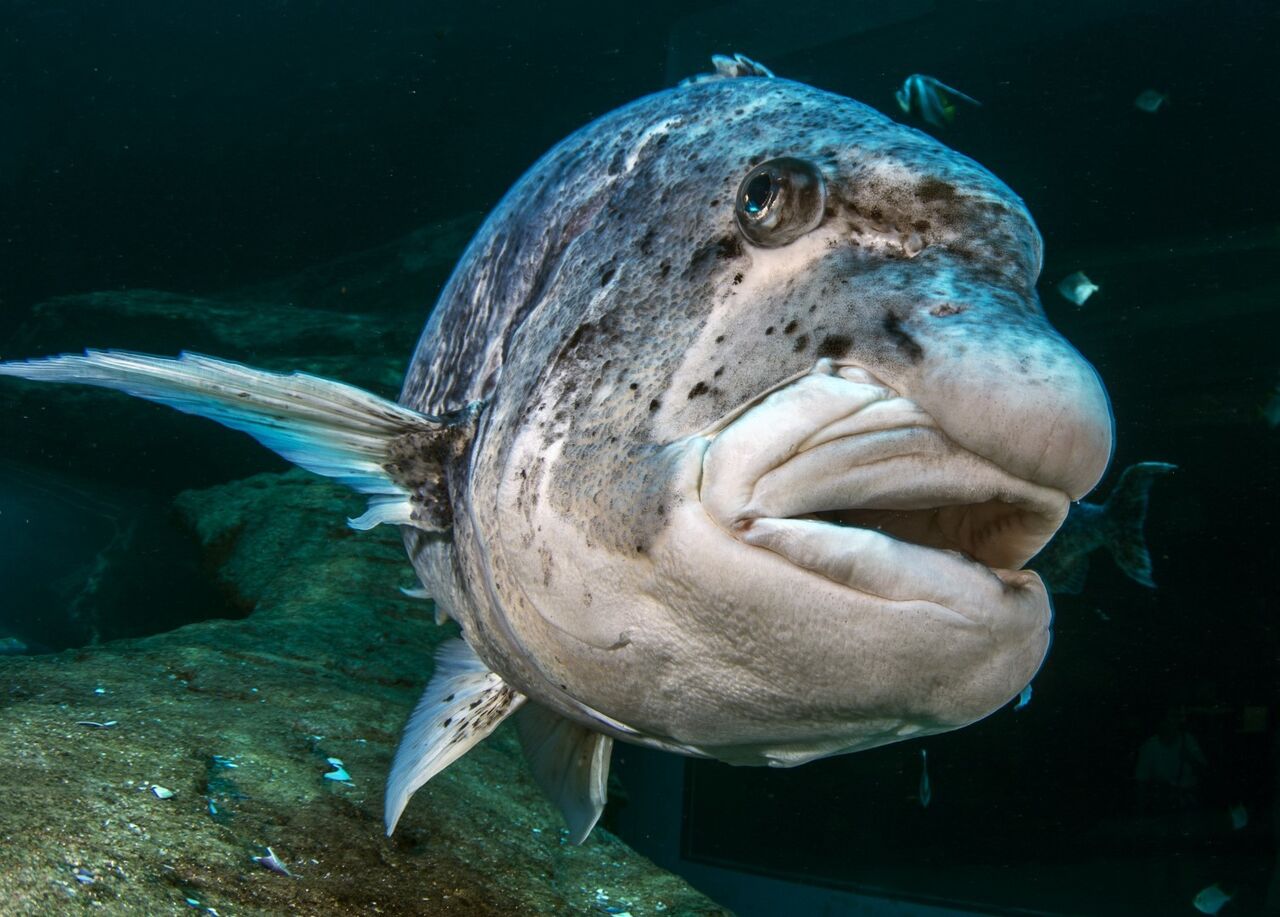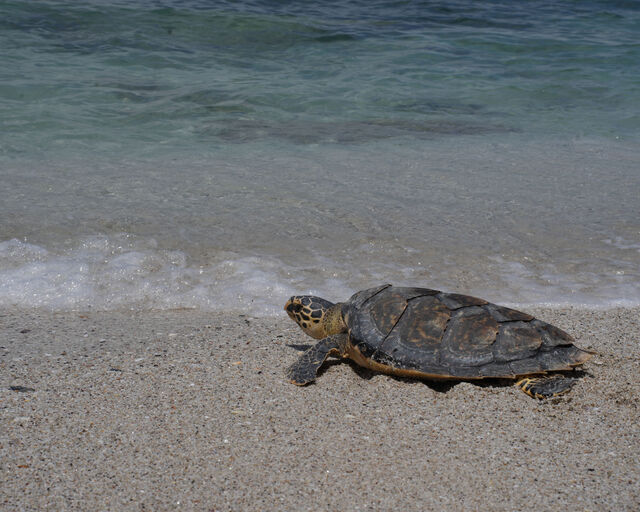Picture a grumpy old man - does he look something like this?
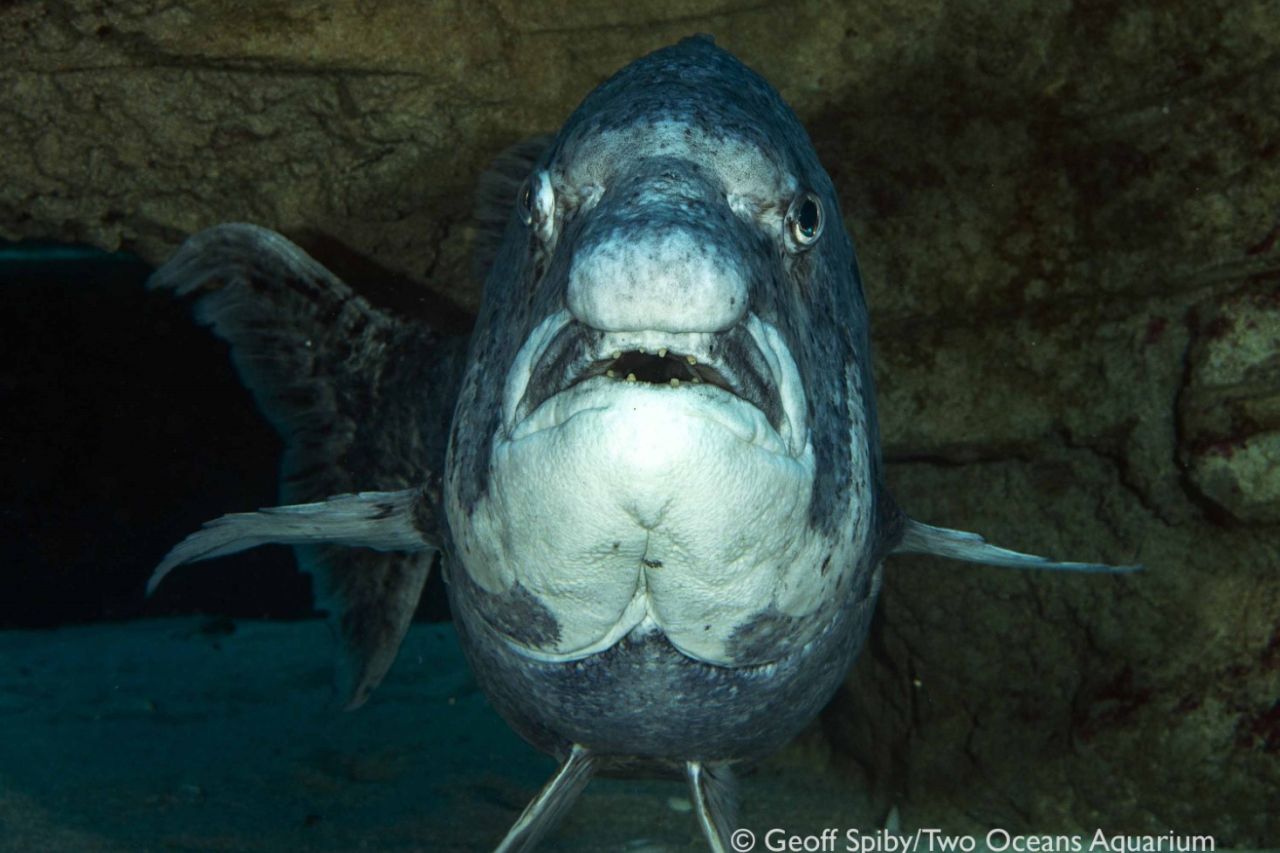
Meet the black musselcracker, one of the most iconic species in ourI&J Ocean Exhibit, and one of the fish most often commented on by our visitors. "Look at its big nose!" "It looks so grumpy!" "It looks like an old man!" Despite its unique look, there's nothing grumpy about this fish - the black musselcracker is an important member of the South African coastal ecosystem.
Its binomial name, Cymatoceps nasutus, literally translates to "swollen bumpy nose", which may be one of the best scientific names for any animal ever!
The black musselcracker or "poenskop" has a specially adapted mouth and jaws that are powerful enough to crush the shells of almost any hard-bodied animals - mussels, urchins, crustaceans. In fact, the black musselcracker's bulbous nose actually forms because of all the extra muscles attached to its jaw, and its fleshy lips help it manipulate and reposition prey for perfect crunchin' power! It has 10 specially adapted cone-shaped teeth that help it crack open the armour of prey like sea stars, and two rows of molars to help break things up even further.
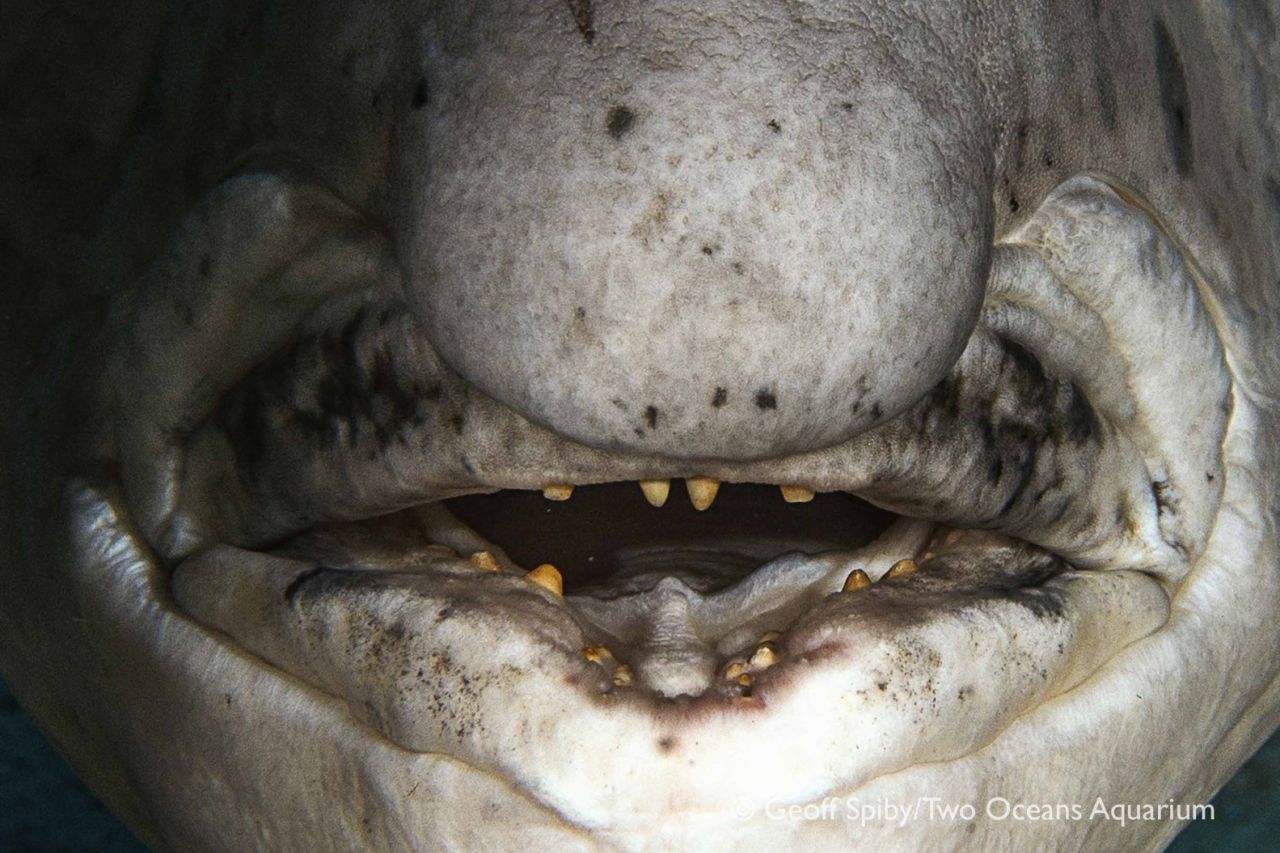
The black musselcracker is a slow-growing fish, reaching sexual maturity at around 10 years of age - although it can actually live up to 45 years, and reach 1.1m in size! All black musselcrackers begin life as females, with green-brown and white blotches and start to take on their characteristic black and grey colours as they approach maturity. By the age of 18, at around 75cm, the largest female musselcrackers change into males and claim territorial feeding grounds up to 80m deep, between Cape Agulhas and St Lucia.
Unfortunately, because of its slow growth rate, late maturity age, and its popularity amongst fishers (thanks to the large size of males and their territorial behaviours), the black musselcracker has been overharvested in many locations and is classified as "Vulnerable and declining" on the IUCN Red List, and as Orange or "Think Twice" by WWF SASSI. The IUCN has noted the importance of Marine Protected Areas for the ongoing survival of this species.
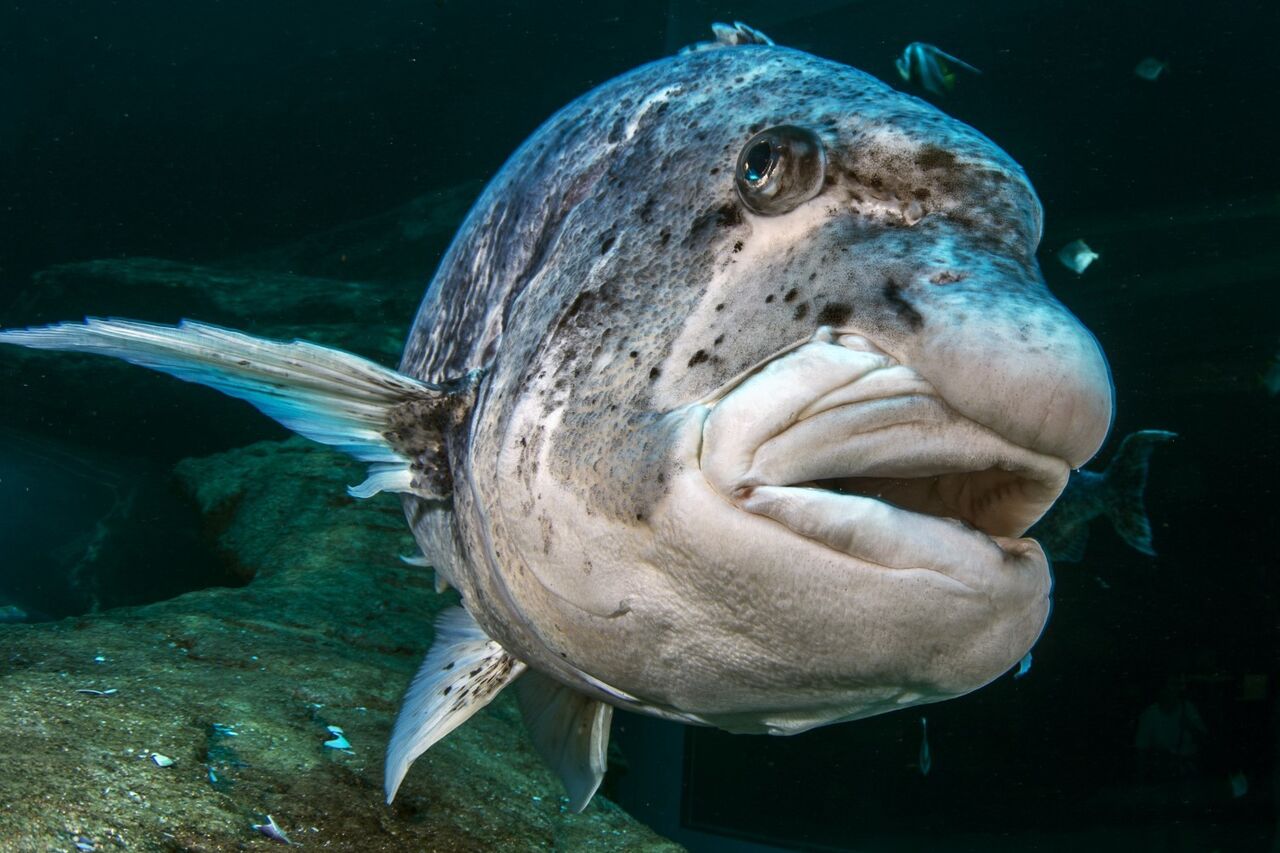
Want to learn more about the fascinating marine life that inhabits South Africa's warmer southern and eastern coastal waters? Be sure to check out the I&J Ocean Exhibit on your next Aquarium visit.
